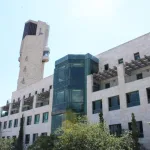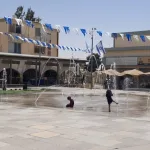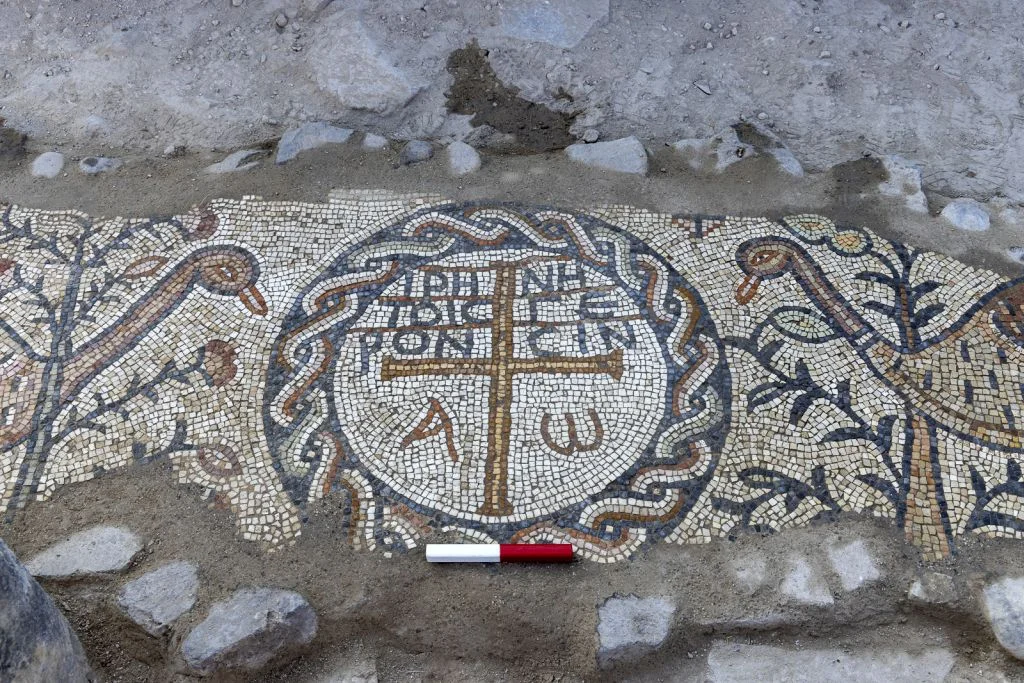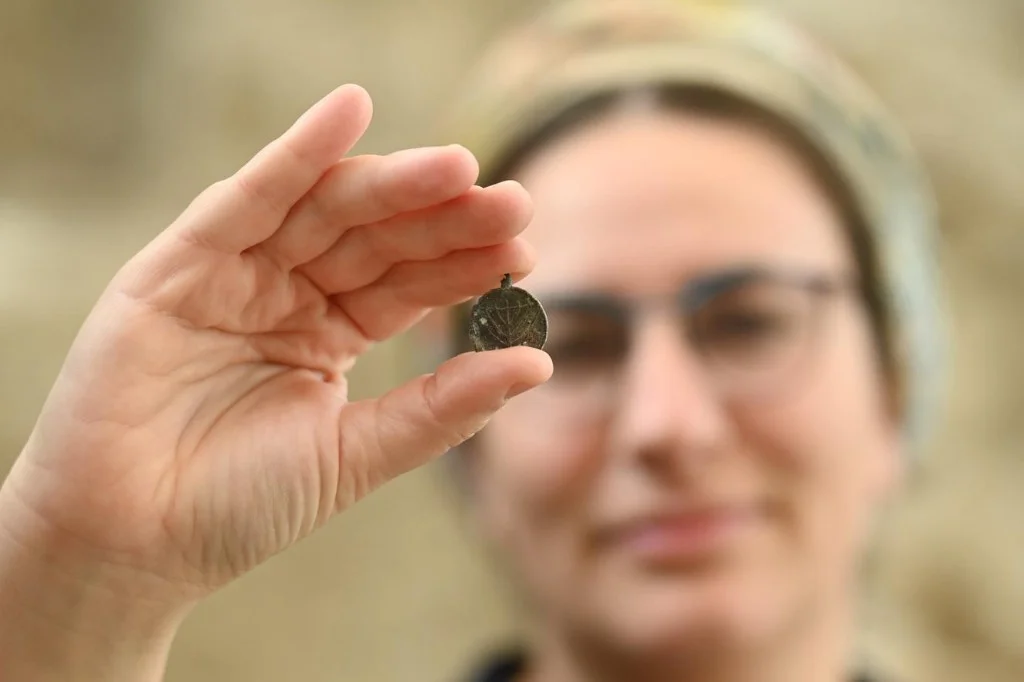Jerusalem, 18 August, 2025 (TPS-IL) — Israeli archaeologists have uncovered what may be the world’s oldest known nursing home, following the discovery of a rare Greek inscription in the ruins of the ancient city of Hippos (Sussita), overlooking the Sea of Galilee.
The colorful mosaic, dating to the late fourth or early fifth century CE, was found at the entrance to a public building during recent excavations at Hippos National Park by archaeologists from the University of Haifa. At its center, the mosaic bears the words “Peace be with the elders,” an inscription that researchers say likely points to the existence of a Byzantine-era institution specifically dedicated to the care of elderly residents.
“This is living proof that care and concern for the elderly are not just a modern idea, but were part of social institutions and concepts as far back as about 1,600 years ago,” said Dr. Michael Eisenberg of the Zinman Institute of Archaeology at the University of Haifa, the excavation’s co-director.
The findings, published in the peer-reviewed journal Zeitschrift für Papyrologie und Epigraphik, provide what the research team believes is the earliest archaeological evidence of a nursing home. While written sources from the fifth and sixth centuries mention charitable institutions for the elderly, this is the first time physical remains have been discovered that can be directly linked to such a facility.
Hippos was the central Christian city of the Galilee region in the Byzantine period. Situated on a hilltop east of the Sea of Galilee, it served as a bishop’s seat and hosted at least seven churches. The city, with its broad east–west boulevard and intersecting cardo streets, was a thriving religious, social, and economic hub. Excavations have been underway there since 2000, uncovering churches, bathhouses, and residences.
The newly uncovered mosaic was located near the intersection of Hippos’s two main streets, roughly 100 meters from the city’s central plaza, inside one of the surrounding residential blocks. Researchers say its placement at the building’s entrance suggests the inscription was intended to be read by all who entered, directly addressing its elderly residents or visitors.
Dr. Eisenberg, along with Dr. Arleta Kowalewska of the Zinman Institute and Professor Gregor Staab of the University of Cologne, analyzed the inscription linguistically, stylistically, and in comparison with historical sources. They also studied its surrounding iconography—images of Egyptian geese, cypress trees, fruits, and vessels. The careful decoration, combined with the text’s unusual dedication, supported their conclusion that the building served a communal purpose centered on elder care.
During the 2023–2024 excavation seasons, the mosaic was fully exposed and underwent conservation by expedition conservator Yana Qedem. The team stressed that the direct reference to elders is highly unusual in ancient inscriptions, making the find all the more significant.
“This was a communal and spiritual institution integrated into the fabric of city life and reflecting the social values of the period,” the researchers explained. “The inscription addresses a specific public directly, which is a rare glimpse into the daily lives of older people in antiquity. It may provide one of the earliest material testimonies in the Holy Land, showing how the Christian community began assuming responsibilities for care that had previously been handled by family networks alone.”
The discovery sheds light on how Byzantine society perceived aging and elder care. While most archaeological remains from the period focus on churches, monasteries, or infrastructure, this mosaic reveals that the community also invested in institutions with daily social functions.
“The find offers a tangible, dated, and clear indication of an institution designed for the elderly,” Dr. Eisenberg said. “It shows that Byzantine society established not only religious centers but also places dedicated to dignity and care for its seniors.”
The researchers say further excavations may reveal more details about the building’s layout and function.



























